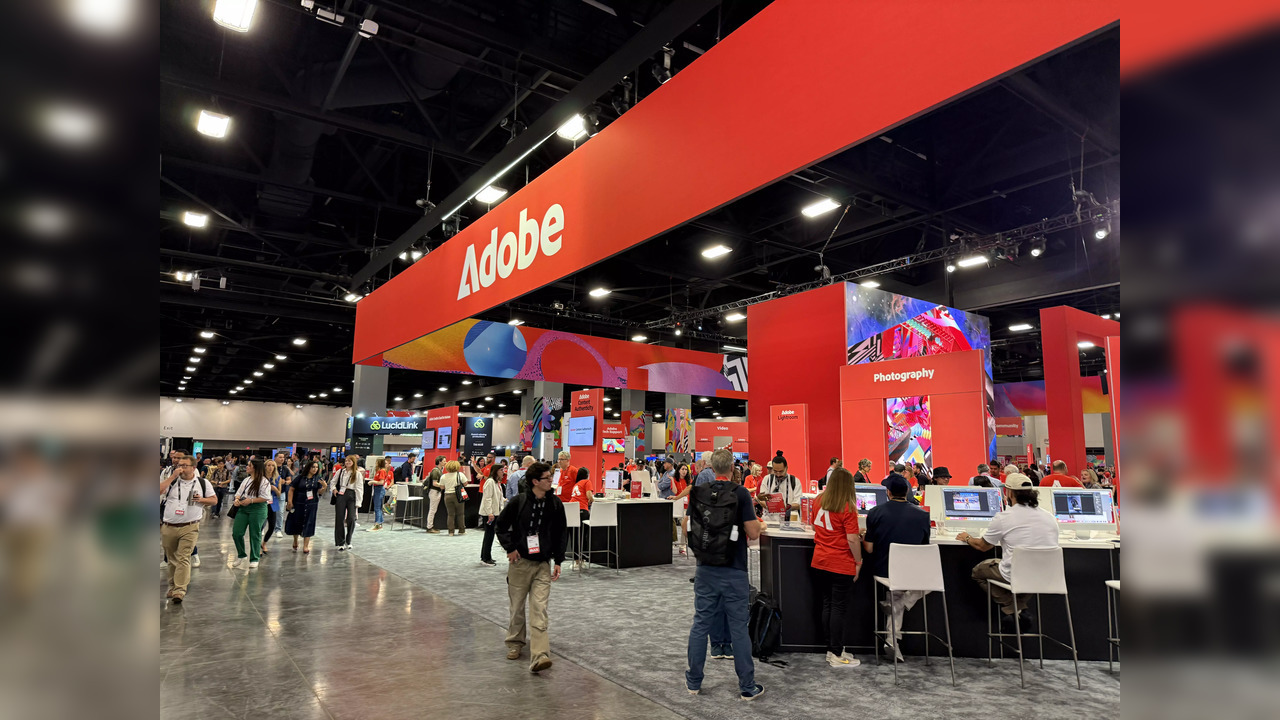As the race for AI supremacy continues, Adobe’s Ian Wang made it clear that companies’ priority is making people’s jobs easier.
Since the explosion of generative AI almost two years ago, there hasn’t been a technology conference or launch event where Artificial Intelligence wasn’t the most used word during the keynote. Even basic functionalities that have been around for years are now being repositioned as AI features by companies to show their presence in this space.
However, Adobe It seems to have a slightly different approach. The goal is to make your apps easier to use and actually make people’s jobs easier without worrying about the level of AI integration into them. Ian Wang, vice president and head of product at Adobe Express, told Times Now Tech on the sidelines of the company’s annual technology conference Max 2024, held in Miami, Florida.
“Our premise is not to impose AI on people. I want to say it very clearly. We often think about AI from the perspective that if we can make it easier for the end user, we will do it, and whether they know it’s AI or not is really secondary. So if you think about resizing, we don’t call it AI resizing. We just call it resizing. We just resized it for them. “Okay?” Wang said, while highlighting Adobe’s thinking behind some of its recent announcements.
He even gave the example of Generative Fill, a very popular feature among creative professionals, which was initially available as a regular feature. However, when Adobe repositioned it and made it add and remove objects, usage more than tripled from that alone. Wang believes it wasn’t simply because of the AI but because of what users could do with that feature.
“We’re interested in a lot of these one-click capabilities. “It’s really to get rid of the tedious work that they themselves can do, but don’t want to do,” he said.
This also allows Adobe to create equally efficient solutions for both creative professionals and non-professionals. Wang said that these two things are not in conflict.
“The biggest challenge is that these users exist in different silos and it is incredibly inefficient for them to work together. So what we want to do with Express is create a common foundation whereby both components can use the same application. But they have two very different points of view. So for a creative professional, you have complete control. They could hand over the creation or the template to a non-professional and they will have a much simpler interface,” Wang added.
Competition from hardware companies
One of the main challenges for software companies like Adobe right now is that some hardware companies, especially phone makers, are now testing some of these solutions directly on their devices. For example, you have the Magic Eraser on Pixel phones. You have the same on Samsung Galaxy devices. Copilot+ PCs offer similar capabilities on Windows devices.
However, Wang believes that this won’t really affect Adobe since the space is so big that there is room for everyone. He said Adobe’s tool allows users to explore their creativity, which sets them apart from what hardware companies do.
“I think at Adobe we champion creativity and empower everyone to be creative. If you want to have very basic tools at your fingertips with a single click, there are many capabilities available. It is totally normal and you are serving 1,000,000,000 and 1,000,000,000 people. But there is a large proportion of the world in which they want to go further, stand out and explore the meaning of their creativity. “That’s where we shine,” he said.
Cost of running AI models
When asked if the cost of running these AI models has decreased in recent years, Wang said that while in some cases there has been a significant decrease, some of the video models are still very expensive to run. This is another battle that almost every company working on AI capabilities is facing right now. Even OpenAI, the pioneer of GenAI, is struggling to keep costs down and constantly requires new investments.
“You are absolutely right that different types of processing are more expensive. Video will be more expensive than images. So what we think about is that we ultimately tie these capabilities to the value that we create for our users. Some of these things, while the processing cost is very high, still saves you a significant amount of time and money. That cost profile will continue to come down,” Wang said.
At this year’s Max, Adobe announced new features and capabilities for nearly all of its platforms, including its AI Video model that comes integrated with Premiere Pro and allows users to render additional frames within a recorded video. Apart from this year, new features have been announced for Photoshop, Express, and more.
Disclaimer:
The information contained in this post is for general information purposes only. We make no representations or warranties of any kind, express or implied, about the completeness, accuracy, reliability, suitability or availability with respect to the website or the information, products, services, or related graphics contained on the post for any purpose.
We respect the intellectual property rights of content creators. If you are the owner of any material featured on our website and have concerns about its use, please contact us. We are committed to addressing any copyright issues promptly and will remove any material within 2 days of receiving a request from the rightful owner.

